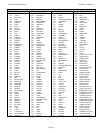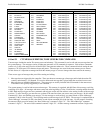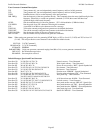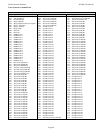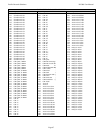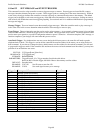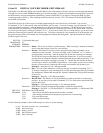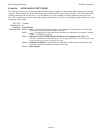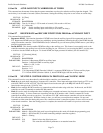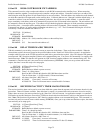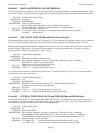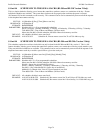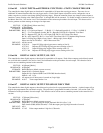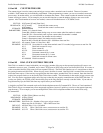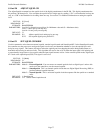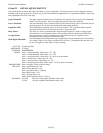
Pacific Research Solutions RI-300e User Manual
Page 71
S-Cmd 36 AUXILIARY INPUT CARRIER DELAY TIMER
This command sets the amount of time that the repeater transmitter stays keyed-on after the auxiliary input has dropped. This
carrier delay is set in tenths of seconds (100 ms) increments. Setting the auxiliary delay time to zero selects no carrier delay.
SYNTAX: 36 [Time]
READ BACK: 36
STORAGE: RAM/EEPROM
PARAMETERS: Time 0 = No delay, 1-255 in tenths of seconds (1/10 seconds or 100 ms)
DEFAULT: 10 (1.0 Second)
EXAMPLE: 36 50 Set the Auxiliary input carrier delay to 5.0 seconds.
36 0 Set the Auxiliary input carrier delay to 0 seconds, (no delay).
S-Cmd 37 REGENERATE and DECODE DTMF TONES FROM the AUXILIARY INPUT
This command has two functions:
•
Regenerate DTMF
: This function determines if DTMF tones from the auxiliary input will be regenerated on the local
TX. Regenerated DTMF tones are 150 ms long with 80 ms spacing immediately following the end of the DTMF decoded
string from another controller. With DTMF Mute On (S-Command 18) you can ensure quality DTMF tones to your link by
using this regeneration mode.
•
Decode DTMF
: This function enables DTMF decoding on the auxiliary port. This feature is not normally used, as the
controller attached to the auxiliary buss will do the decoding for you. However, if you are using the RBI-3, you may want
to be able to decode DTMF on this port. To decode DTMF, the input port must be enabled, (See S-Command 35).
SYNTAX: 37 [Function] [Mode]
READ BACK: 37
STORAGE: RAM/EEPROM
PARAMETERS: Function: 0 =Regenerate DTMF on auxiliary input
Function: 1 =Decode DTMF on auxiliary input
Mode: 0 = Off, 1 = On
DEFAULT: Function: 0 = 0
Function: 1 = 0
EXAMPLE: 37 01 Regenerate DTMF (Function 0, Mode 1), regenerate DTMF digits on TX from auxiliary input
37 11 Decode DTMF (Function 1,Mode 1), decode DTMF digits from the auxiliary input
S-Cmd 38 MULTIPLE CONTROLLER DATA PROTOCOL and CLONING MODE
This command is used to set up the method by which multiple controllers can communicate.
•
Mode 0
can be used when connecting to someone else’s controller. These input and output digital signals are TTL levels
with LOW TRUE or LOW ACTIVE. The COS input is found on the same pin as the BRQ line and the PTT output is
found on the same pin as the “S_DATA” line.
•
Mode 1
allows multiple RI-300 controllers to communicate with each other using serial data. In this mode, one RI-300
controller can send S-Commands to another RI-300 controller.
•
Mode 2
is used to send all configuration data, including user commands and macro data, from the one controller to another
controller (cloning). To clone, connect two controllers with the AUX interface cable. Send S-command 38 2 to the
controller from which you want to copy data. You will hear CW “OK” and the master controller will start to send data.
This will take about 90 seconds. When the cloning is done, you will hear a second function complete. Do not send
commands to either controller during this process nor connect more than 2 controllers together, or errors will occur on all
of the cloned controllers. Once the cloning process is complete, the controller will return to its previous serial mode.
SYNTAX: 38 [Mode]
READ BACK: 38
STORAGE: RAM/EEPROM
PARAMETERS: Mode 0 = Digital I/O (Only used in special application, this mode will disable the programming port)
Mode 1 = Serial Data I/O (Used when connecting multiple controllers together)
Mode 2 = Cloning
DEFAULT: 1
EXAMPLE: 38 0 Mode 0 selects the digital state port.
38 2 This controller will send all parameters to an attached controller.



